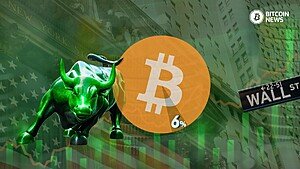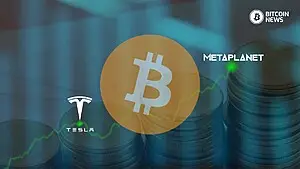Navigating the Market & Macro Uncertainty
The winds of the financial markets blow unpredictably, making it critical to grasp the intricate dance between the treasury market, interest rates, and their ripples throughout the global economy. Arthur Hayes, a prominent figure in the digital asset sector, recently shared a Medium highlighting how he is thinking about these things. The post points out the recent maneuvers in the U.S. Treasury market are a testament to the complex interplay between fiscal policies and economic outcomes.
The Treasury Market and Yield Curve Dynamics
Hayes pointed out that the U.S. Treasury market, a crucial component of the global financial system, is currently experiencing significant shifts. The yield curve, a critical indicator used to forecast economic trends, has been showing signs of a bear steepener – a scenario where long-term bond yields rise faster than short-term yields. This trend can have profound implications for the economy, as it often signals investor skepticism about future economic growth.
Related reading: Moody US Credit Rating Downgrade: US Rating is Now “Negative”
Interest Rates: The Central Bank’s Balancing Act
Central banks, particularly the Federal Reserve, play a pivotal role in shaping the yield curve through interest rate policies. Recently, there’s been a focus on the Fed’s approach to balancing inflation concerns with the need to support economic growth. As rates rise, the cost of borrowing increases, which can slow down economic activity but also help temper inflation.
US Treasury Bonds and the Fiscal Landscape
Long-term U.S. Treasury bonds are key reserve assets in the global financial system. They are seen as a safe haven in turbulent times but can be susceptible to shifts in investor sentiment and policy changes. The current state of the treasury market reflects the challenges faced by the U.S. government in funding its operations amidst large deficits.
Impact on Bank Balance Sheets
Rising bond yields and the evolving yield curve have a direct impact on bank balance sheets. Banks hold significant amounts of government debt, and fluctuations in bond prices can affect their financial stability. A bear steepening of the yield curve can lead to unrealized losses on these securities, pressuring the banks’ capital adequacy and liquidity positions.
Related reading: Banking Crisis 2023: US Banks Near Insolvency or Already Insolvent
Global Implications: Oil Prices and Geopolitical Tensions
Hayes added that the international landscape, particularly the ongoing Israel war, adds another layer of complexity. Geopolitical tensions can influence oil prices, a crucial factor in the global economic equation. A spike in oil prices, often a consequence of instability in the Middle East, can lead to higher inflation and further complicate the Central Bank’s policy decisions. It also makes it harder for politicians to win reelection when gas prices are up under their watch.
Total Value Locked: A New Financial Frontier
In the midst of these traditional financial (TradFi) dynamics, the concept of Total Value Locked (TVL) in decentralized finance (DeFi) has emerged as a new frontier. TVL represents the total value of digital assets deposited into DeFi protocols to use their decentralized financial services.
It is a metric gaining relevance as more capital flows into these autonomous platforms, indicating increasing adoption of blockchain-based finance. This shift represents a diversification of the global financial landscape away from traditional fiat systems.
Much of trading in TradFi is already automated with many transactions executed by machines. While speculation can be entertaining, Bitcoin is the real tool with the potential to reform the fragile fiat system we’ve constructed since going off the gold standard in 1971. One of the most insightful quotes from the Medium reads “The first stop is always Bitcoin. Bitcoin is money and only money.”
Arthur Hayes’ Perspective on the Financial Ecosystem
Arthur Hayes does a great job being vocal about the challenges and opportunities presented by these evolving market dynamics. He emphasizes the importance of understanding the interconnectedness of fiscal policies, market trends, and geopolitical events in navigating the treasury market and broader financial system.
The current state of the treasury market, characterized by fluctuating interest rates, shifting yield curves, and the impact on bank balance sheets, reflects the complexity of the global financial system.
As geopolitical events like the Israel war influence oil prices and market sentiment, it is more important than ever for investors and policymakers to remain vigilant and adaptable. In this intricate financial tapestry, figures like Arthur Hayes provide insights that are vital for understanding the ever-changing landscape of finance in today’s world.










